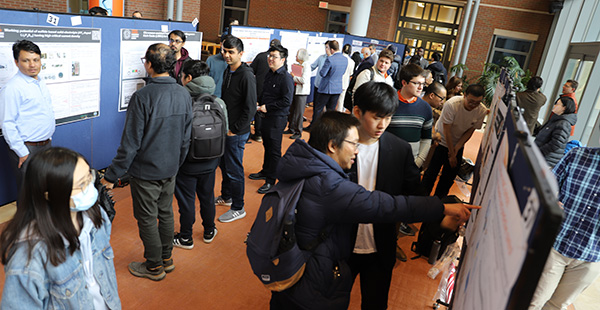The College of Engineering and Computer Science offers six Ph.D. programs and eleven M.S. programs. The programs offer graduate students opportunities for high-quality research. The research office provides resources for the professional and social life of our graduate students.

Graduate Student Funding
Ph.D. students in the College of Engineering and Computer Sciences may be supported through assistantships or fellowships. Graduate assistants (teaching or research) assist in teaching courses or conduct research supporting their thesis or dissertation. The links below provide further information about each type of support.
Financial support for M.S. students is given on a competitive basis and is typically in the form of a tuition discount.
Research Day

We celebrate graduate student research in the College of Engineering and Computer Science on our annual Research Day. Each Research Day, industry representatives, faculty, and students from a wide range of disciplines learn about novel approaches to solving challenging research problems. Through poster presentations and research pitches, ECS graduate students communicate the intellectual merit and broader impacts of their research.
